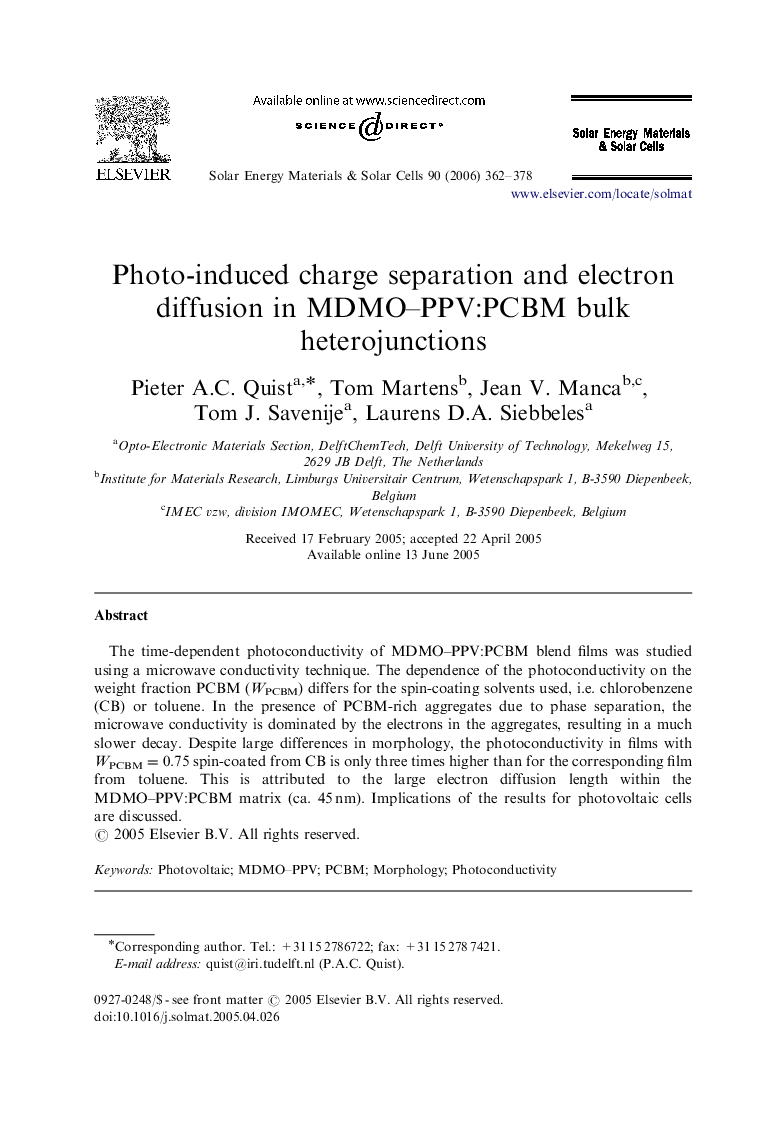| Article ID | Journal | Published Year | Pages | File Type |
|---|---|---|---|---|
| 81323 | Solar Energy Materials and Solar Cells | 2006 | 17 Pages |
The time-dependent photoconductivity of MDMO–PPV:PCBM blend films was studied using a microwave conductivity technique. The dependence of the photoconductivity on the weight fraction PCBM (WPCBM) differs for the spin-coating solvents used, i.e. chlorobenzene (CB) or toluene. In the presence of PCBM-rich aggregates due to phase separation, the microwave conductivity is dominated by the electrons in the aggregates, resulting in a much slower decay. Despite large differences in morphology, the photoconductivity in films with WPCBM=0.75 spin-coated from CB is only three times higher than for the corresponding film from toluene. This is attributed to the large electron diffusion length within the MDMO–PPV:PCBM matrix (ca. 45 nm). Implications of the results for photovoltaic cells are discussed.
